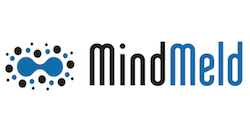[Editor’s Note: Each of the tools discussed below are examples of the various approaches that fit into the Bot Platform category in the just-released “Decision Makers’ Guide to Enterprise Intelligent Assistants.” In addition, conversational AI for customer care is an integral theme at the upcoming Intelligent Assistants Conference London, May 4-5.]
 MindMeld, a long-time specialist in natural language understanding and conversational interfaces, has published a Conversational AI Playbook with insights on how to construct conversational apps. The playbook defines four distinctly different technical approaches for building apps that utilize a conversational UI.
MindMeld, a long-time specialist in natural language understanding and conversational interfaces, has published a Conversational AI Playbook with insights on how to construct conversational apps. The playbook defines four distinctly different technical approaches for building apps that utilize a conversational UI.
- Rule-based Platforms
- Cloud NLP Services
- Machine Learning Toolkits
- Conversational AI Platforms
This categorization is useful. The playbook gives a brief description of each approach, drawing distinctions between the various techniques, including their strengths and weaknesses.
Rule-based Platforms
Rule-based approaches are the oldest, having been in place since before the advent of machine learning. According to the playbook, the advantages of rule-based approaches are that they provide the quickest method for getting a conversational UI up and running. Developers script logic that identifies incoming messages and routes these according to rules. A common approach is to identify keywords and retrieve the best response based on pattern matching. The downside of rule-based approaches is that they require massive amounts of scripting and are only suitable for handling very narrowly defined interactions. Rule-based approaches typically can’t learn from new data or automatically update themselves to handle interactions that aren’t already scripted.
Botkit by Howdy and Microsoft Bot Framework are cited as examples of rule-based frameworks.
Cloud NLP Services
Cloud NLP services don’t require developers to have training in machine learning, but they offer some of the advantages machine learning affords. The playbook notes that most cloud NLP services offer pre-trained machine learning models for the most commonly used consumer domains, such as weather, music, and travel. Developers can piggyback on this training, while also leveraging intent recognition and entity classification services. For developers building apps in common consumer domains, cloud NLP services can be a quick way to get an app deployed that is far less brittle than an app relying on a rule-based approach. The downside is that by using a cloud NLP service, a company is providing its training data to the cloud service. Another negative is that for developers and companies building apps that fall outside the service’s pre-trained domains, the service doesn’t offer much of a leg up.
Google’s api.ai and Facebook’s wit.ai are offered as examples of cloud NLP services.
Machine Learning Toolkits
Machine Learning toolkits are the domain of AI researchers and not for the faint of heart. These toolkits provide access to low-level algorithms, such as deep learning models. Unfortunately, these tools aren’t ready to use out-of-the-box in the same way that cloud NLP services are. They aren’t pre-populated with training data. They offer bare bones access to complex algorithms and require developers to do all the heavy lifting. As a result, machine learning toolkits aren’t really a viable option for most companies that want to build conversational apps.
Popular machine learning toolkits cited in the playbook include Google’s TensorFlow and Microsoft Cognitive Toolkit.
Conversational AI Platforms
The playbook describes conversational AI platforms as falling somewhere between cloud NLP services and machine learning toolkits. A recent entrant into the marketplace, conversational AI platforms offer much of the technical power of hard-to-use machine learning toolkits, while offering developers a layer of abstraction that makes these powerful tools more user-friendly. Conversational AI platforms offer a full suite of natural language processing tools, which include intent classification, entity recognition, entity resolution, question answering, and dialogue management. The upside of this platform is that they enable companies to build custom conversational apps for any domain, so long as the company has access to training data. These platforms also don’t require the company to share their proprietary data with a cloud service. The downside is that conversational AI platforms require more knowledge and skill to use. Developers should have training in machine learning and data science best practices.
The playbook cites MindMeld’s own MindMeld Workbench as an example of a conversational AI platform.
The MindMeld playbook goes on to provide a step-by-step guide to designing, building, and deploying a conversational application. The playbook offers valuable guidance for companies ready to roll up their sleeves and dive into the details of constructing conversational interfaces to delight their customers and prospects.
Categories: Conversational Intelligence, Intelligent Assistants, Articles, Mobile + Location

 Opus Research Welcomes Ian Jacobs as VP and Lead Analyst
Opus Research Welcomes Ian Jacobs as VP and Lead Analyst  United Airlines, TXU Energy, and Memorial Hermann Among Opus Research’s 2024 Conversational AI Award Winners
United Airlines, TXU Energy, and Memorial Hermann Among Opus Research’s 2024 Conversational AI Award Winners  Views from the NICE Analyst Summit: Introducing the Experience Continuum
Views from the NICE Analyst Summit: Introducing the Experience Continuum  Opus Research Announces 2023 Conversational AI Award Winners
Opus Research Announces 2023 Conversational AI Award Winners